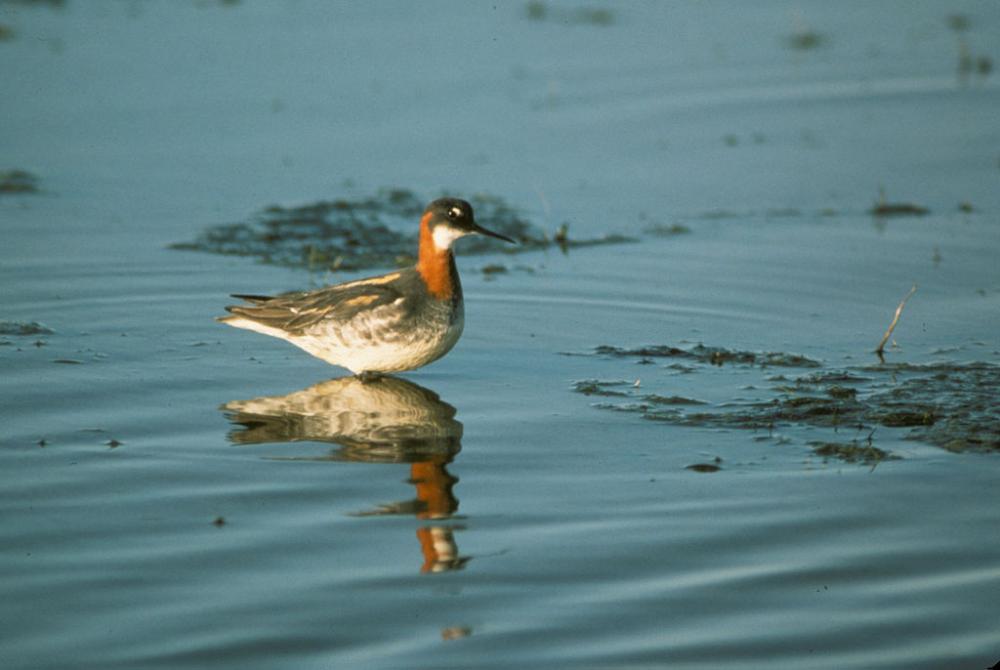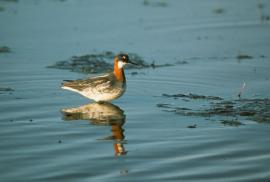Guide to Boreal Birds
Overview
Among Phalaropes, the female has brighter plumage, and the male incubates the eggs and cares for the young. Red-necked Phalaropes, like Red Phalaropes but unlike other shorebirds, prefer to swim rather than wade, a habit that enables them to spend the winter on the high seas, although on occasion they wade in pools and feed on mudflats with many other shorebirds. They float buoyantly, picking small creatures from the surface of the water with rapid jabs of the bill, often while swimming in circles or spinning around to stir up the water with their lobed toes.
Description
7" (18 cm). A sparrow-sized swimming shorebird with a conspicuous wing stripe. Breeding adults have dark head and back, white chin and belly separated by chestnut upper breast and sides of neck. Females more boldly patterned than males. In winter, darker above, with dark line through eye and usually with dark crown, and entirely white below. Bill thin.
Voice
A sharp twit or whit.
Nesting
4 olive eggs, spotted with brown, in a slight hollow on the ground in marshy tundra.
Habitat
Breeds on tundra pools; visits open ocean, beaches, flats, and lake and river shores during migration.
Range/Migration
Breeds in Alaska and across northern Canada. Migrates along both coasts, more rarely in interior, and winters mainly at sea in Southern Hemisphere. Also in Old World.



